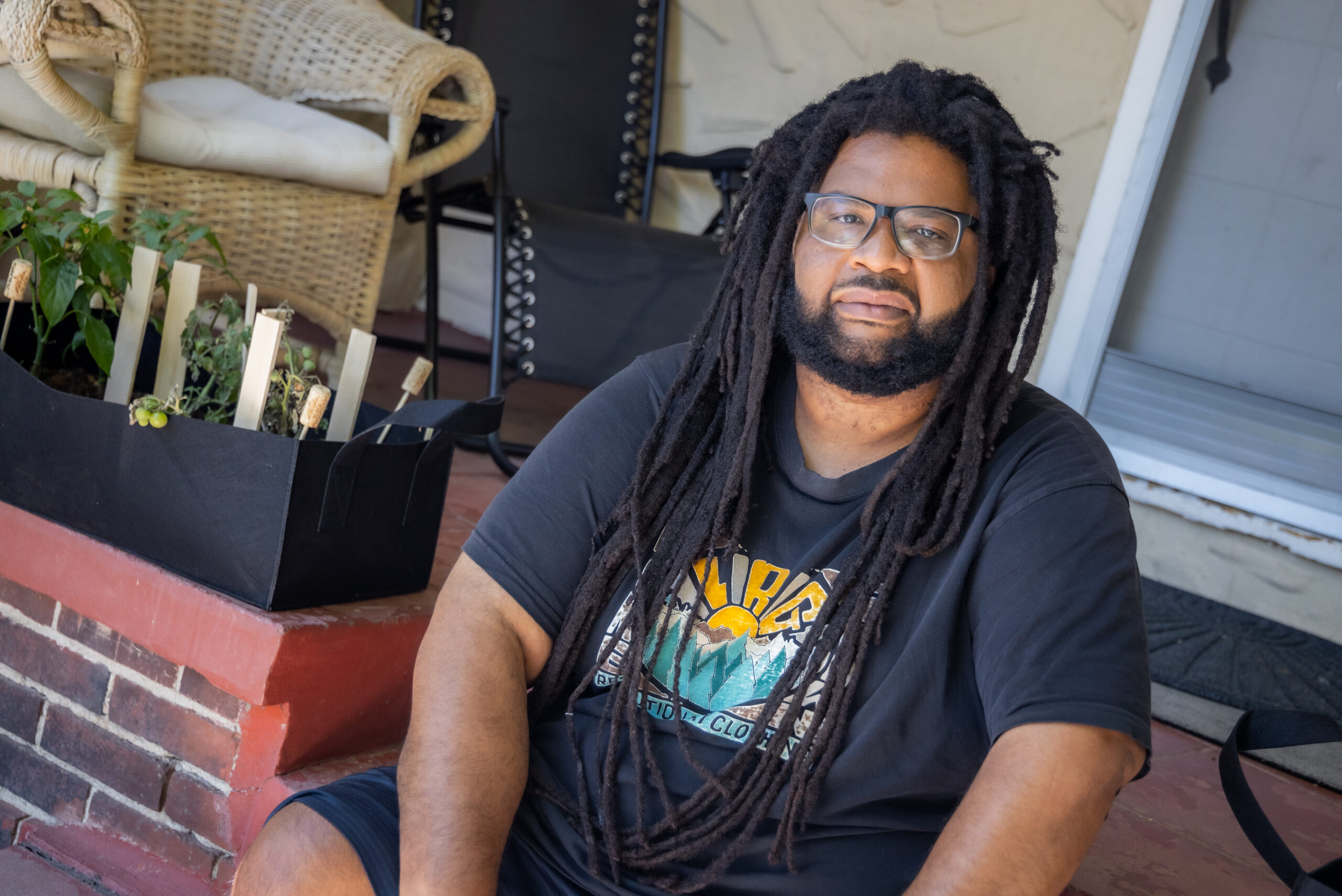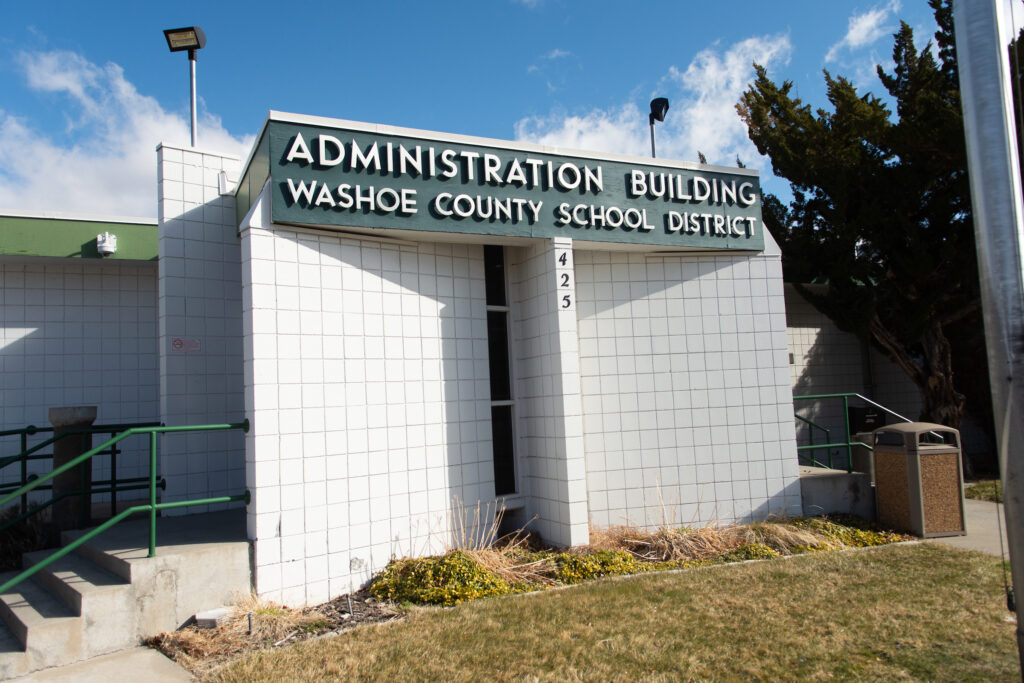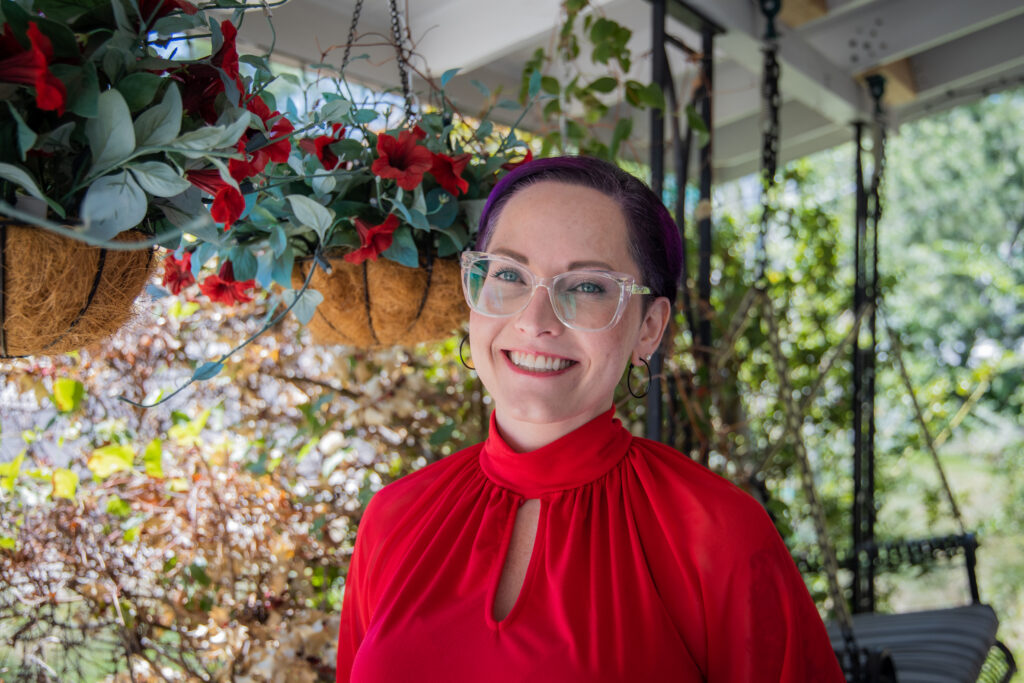For some Washoe County teachers, new school year brings more worry than excitement

Lindsay Burnett says she relies on data to do her job as a special-education teacher in Reno.
If her students stumble on certain concepts, it quickly becomes evident on classroom assignments or tests. Their incorrect answers show educational weak spots — a signal that Burnett needs to teach the material in a new way so her students can grasp the skills or subject matter.
Why then, she wonders, didn’t the Washoe County School Board do the same when deciding whether to reopen schools for the upcoming academic year?
“As a teacher, you’re asked to use the data you collect to determine what you need to teach,” said Burnett, who works at Elmcrest Elementary School. “I feel like the board was given all the data and went completely against it.”
Last week, after a nearly 10-hour board meeting, the district’s trustees approved in-person learning to start the 2020-2021 year. Elementary students will attend school in-person full time, while middle and high school students will follow a hybrid model, alternating between in-person and distance education. The decision defied the recommendation of Washoe County’s health officer, Kevin Dick, who had advised against physically reopening schools.
His caution came amid large numbers of COVID-19 cases and total hospitalizations still being reported each day in Washoe County. Dick said he feared the “high potential of the virus spreading to students and faculty, and eventually to our vulnerable populations, where the fatality rate is much higher.”
But Washoe County School District Superintendent Kristen McNeill shared her own fear. Without schools serving as a connective tissue of sorts, providing social interaction and mental health services, she worried how children would fare in the long run. Ultimately, the board agreed.
The decision caught many of the district’s teachers off guard. Other urban school districts, including in Las Vegas, had declared their students would start the school year virtually.
Now, with just days before students return, teachers interviewed by The Nevada Independent say they’re weighing their options. Others feel stuck, grounded by the safety net of a paycheck and medical insurance despite health concerns.

A numbers game
A staff survey conducted by the district foreshadowed the jockeying that would occur if in-person learning moved forward.
Of the 2,887 staff members who responded, 20 percent said they would need some form of accommodation to return because of “high-risk concerns.” District officials noted those accommodations likely include requests for a distance learning position. Thirteen percent of staff respondents, meanwhile, outright said they would need a distance learning position because of their “high-risk concerns.” Another 7 percent said they would prefer a distance learning position.
Fifty-nine percent of staff members surveyed said they plan to return. Alternatively, slightly less than 1 percent said they would not return.
Rachel Fisher, a first-grade teacher at Juniper Elementary School in Sparks, is among the educators who may walk away. She has submitted a letter from her doctor requesting a distance learning position because her depression and anxiety have worsened amid the pandemic. If she doesn’t receive approval for the medical reason, she will request an unpaid leave of absence. Her third option is resignation.
Fisher said it’s not just about her health and well-being. She also plays a key role caring for her 84-year-old mother-in-law as well her sister, who has Type 1 diabetes, and a newborn.
“While it would be extremely difficult, it would be doable,” Fisher said about forgoing a job and income. “It would be a very frugal year for me, for sure, but the risk of death and complications are just not worth it for me or for my family members.”
In a district with roughly 4,000 educators, it’s unclear how many may snag a coveted remote teaching position. Families can opt to enroll their children in full-time distance learning. How many do so will dictate the number of available positions, said Emily Ellison, the district’s chief human resources officer. Priority will be given to teachers who qualify under the federal Americans with Disabilities Act.
The act, however does not include a list of conditions that qualify as a disability. Instead, the ADA defines a person with a disability as someone who has “a physical or mental impairment that substantially limits one or more major life activities.”
Ellison said the district, as of Tuesday, had made 600 calls to staff members who indicated they have an underlying health issue that concerns them about returning to school. Some were inquiring about accommodations that could be made within the school environment, she said, while others said they do not want to return at all. About 300 employees have requested accommodations because of medical reasons, she said.
The district also set a Friday deadline for staff to submit unpaid leave of absence requests. Ellison said the district hopes to give employees an indication early next week whether unpaid leave will be accommodated.
She said her staff is working as fast as possible to process the requests.
“I really struggled with trying to figure out a way that we could do it differently or faster because I know that it creates a lot of uncertainty for staff,” Ellison said. She ultimately concluded the district couldn’t begin this process until a reopening plan had been finalized. “We couldn’t ask people to make those decisions without having the understanding of what was approved.”
As teachers wait for answers on that front, the Washoe Education Association has gone a different route. The union filed a complaint with the state’s Occupational Health and Safety Administration (OSHA) and requested an investigation into safety concerns related to the reopening.
Natha Anderson, the union’s president, said those concerns extend beyond teachers’ health and safety. The organization, she said, recognizes that teaching is a female-heavy profession and because women often play caregiver roles to children or other family members, that must be taken into account, too.
“Really there is no avenue to go if an elected group makes a decision to not follow the advice of the health department,” she said, explaining the rationale for filing an OSHA complaint. “We still wanted to show there are some concerns.”
Before formally receiving a copy of the complaint, the school district lashed out at WEA on Tuesday, releasing a statement saying the union’s action “is not supported by facts.”
District officials said the reopening plan meets or exceeds Gov. Steve Sisolak’s directives for face coverings and social distancing. They also note the district has spent $460,000 on personal protective equipment for staff members.
“We further believe the WEA’s potential complaint is inappropriate and unfortunate, as District leadership has continually worked to establish a trusting relationship with all of our associations,” district leaders wrote.

Back-to-school fears
Teachers expressed a variety of concerns, mostly centered around lack of information. They posed questions about class sizes and social distancing, ventilation issues in aging buildings, availability of cleaning supplies, actual time to sanitize classroom furniture and — perhaps the biggest inquiry of all — what happens if a student or teacher tests positive for COVID-19. (The district has compiled answers to some questions here.)
The district’s assurances haven’t left some teachers feeling any more confident.
Michon Baker, an English teacher at Pine Middle School, spent the last few days of her summer break scrambling to find an attorney who could draft a living will with her medical wishes. The 44-year-old is familiar with high-risk professions. Her husband, a member of the National Guard, has been deployed to Afghanistan.
She said this is different.
“We’re being asked to do what we ask our military but without proper protection and funding,” she said. “I’m not asking for a raise. I’m just asking, ‘Can you provide me a face shield?’”
Baker chalked up the board’s reopening decision to community pressure. In her view, the district caved to parents who wanted schools reopened in lieu of other child care options.
Sixty-seven percent of families with elementary students who completed a district survey said they preferred in-person education. The results were similar for families with middle school (62 percent) and high school (71 percent) students.
Will Harper and his wife, Dana Hamilton, agree with that assessment. The couple teaches at Spanish Springs High School, where he works with students who are learning English as a second language and she serves as a counselor. They’ve observed schools turning into clearinghouses that provide food, social skills and mental health services on top of education.
“I think that’s too much pressure in the best of times,” Hamilton said.
Her husband said the school reopening debate has created a narrative that if teachers don’t want to resume in-person schooling, they don’t care about children. He said that’s categorically false. Harper said he worries about his students, many of whom live in multi-generational households, and their families. He doesn’t want to see them put into a position where they’re winding up sick or carrying the virus home and infecting vulnerable family members.
Harper acknowledges distance learning was a struggle in the spring, partially because some of his students picked up extra work hours after their parents suffered job losses. Still, he maintained weekly two-way communication with all his students and believes virtual learning could have been a success this year if teachers had time to plan for it.
Although upset with the district’s decision, Harper said he’s not applying for a remote teaching position or a leave of absence.
“I opted for going back to the classroom when we reopen because I feel that is the best way I can serve students,” he said. “If they’re going to be back, I’m going to be back.”
Shaughn Richardson, a teacher at Washoe Inspire Academy, said he was “pretty shocked and disappointed” by the reopening decision. He’s more concerned for older teachers or those with health concerns as well as low-income students without access to health care. The class sizes at his alternative schools are generally three to five students.
But the reopening plan, thin on details, has made him question the district’s commitment to its staff and students. Richardson said time is running out to safely plan for students’ arrival on Aug. 17.
“You can only do so much without having specifics,” he said.
Burnett, the special-education teacher at Elmcrest Elementary School, said she’s preparing as if she were a nurse. Her back-to-school shopping list consists of medical scrubs. She plans to shed her school clothes, throw them in the washer and shower each day before interacting with her three young children or husband.
The only problem?
“They’re more on the expensive end,” she said. “I don’t have a ton of money to spend on scrubs.”
